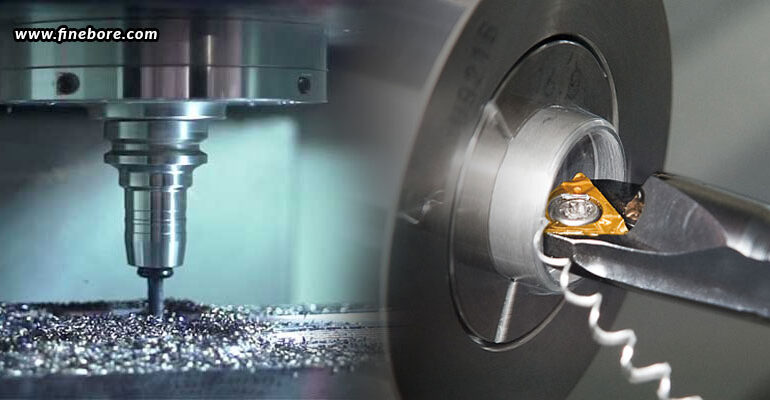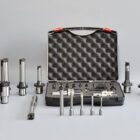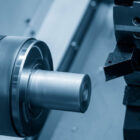Being unable to distinguish between the terms drilling and boring is a common confusion. This is because drilling and boring both involve removing material from a workpiece, which is why they could appear to be interchangeable. However, this is not true. Although the goal of both the processes is to remove material from the workpiece, there are significant distinctions between them. Both procedures have different applications, different goals, and different equipment requirements. In the field of metalworking and machining, efficiency and precision are critical. Although both drilling and boring can aid in accurate and effective material removal, it is yet important to understand the different roles, and when to use each technique and the tools involved.
Drilling – Versatility and speed
Drilling is a basic machining procedure used to make holes in workpieces. It is distinguished for its adaptability and effectiveness. The primary objectives of drilling include –
- Hole creation: Drilling is most commonly used for creating holes in a workpiece of different dimensions. It is frequently utilized in a variety of industries, including woodworking, metalworking, and construction.
- Speed and efficiency: Since drilling is a quick procedure, it is appropriate for uses where efficiency is important. It can quickly perforate a variety of materials for creating holes.
- Simplicity and accessibility: Drilling is a popular option for many applications since it is simple to use and widely accessible.
Drilling involves the usage of a revolving instrument with one or more cutting edges, known as drill bits, which includes twist drills, spade drills, and hole saws, each available in a variety of designs to fit a range of materials and purposes. In order to cut into the workpiece, the drill bit must rotate and apply axial force.
When to choose drilling?
- When holes need to be made quickly and efficiently
- For a variety of materials, including plastic, metal, wood, and more
- In situations where accuracy is not the main priority
- When it’s acceptable to have moderate tolerances
Boring – Precision in machining
The main purpose of boring is to create extremely precise interior diameters, or to enlarge and refine preexisting holes. The primary objectives of boring include –
- Internal machining: Boring is commonly used in internal machining, such as when enlarging holes or when making exact cylindrical shapes within a workpiece.
- Attaining precision: Boring provides remarkable surface finish and diameter accuracy, which makes it ideal when precise tolerances are needed, as in the production of hydraulic or engine cylinders.
- Corrections and finishing: Misaligned or out-of-round holes from earlier operations, such as drilling, are frequently fixed using this technique. Furthermore, boring plays a key role in providing components with exceptional surface finishes.
There are several types of boring tools, including modular tooling systems, indexable insert tools, and single-point tools. The machine spindle is equipped with a boring head, which is precisely adjusted to remove material in a controlled manner. When working with deep holes and big diameters, boring tools prove to be very helpful.
When to choose boring?
- For applications where precise measurements are crucial
- When exact internal measurements with close tolerances are required
- For making stepped holes or other interior geometries like tapers
- When complex internal shapes need to be created
- To make the existing holes more concentric and round
- For refining imperfect holes
A comparative analysis
To better understand the differences between boring and drilling, let’s look at some important aspects that affect the decision to use either boring or drilling.
Purpose
While drilling is largely used to create holes quickly and economically, with less emphasis on precision, boring is primarily used to achieve high precision and accuracy in internal diameters, corrections, and finishing.
Tooling
While drilling uses a variety of drill bits made for particular materials and applications, boring uses specialized instruments like boring bars, boring heads, and inserts for precision work.
Material removal
Boring is the best method for jobs requiring tight tolerances since it eliminates material precisely and progressively. Drilling, on the other hand, removes material quickly but could not be as precise as boring.
Tolerances
Drilling is best suited for applications where moderate tolerances are acceptable, while boring is appropriate for those requiring precise tolerances and smooth surface finishes.
Speed
Because to the precision and material removal qualities, boring is slower than drilling. Conversely, drilling is quick but not very accurate.
In conclusion, the particular needs of the application ultimately determine which method of drilling or boring should be used. Boring is the best option if you require fine internal diameters, tight tolerances, and great precision. Drilling is the better choice, though, if you value speed and efficiency.
The precision boring tools in Bangalore from FineTech Toolings are the finest option for those who value accuracy and precision over speed. The best tools are available here to assist you in a variety of boring applications, including deep diameter boring, fine boring, rough boring, and more.






